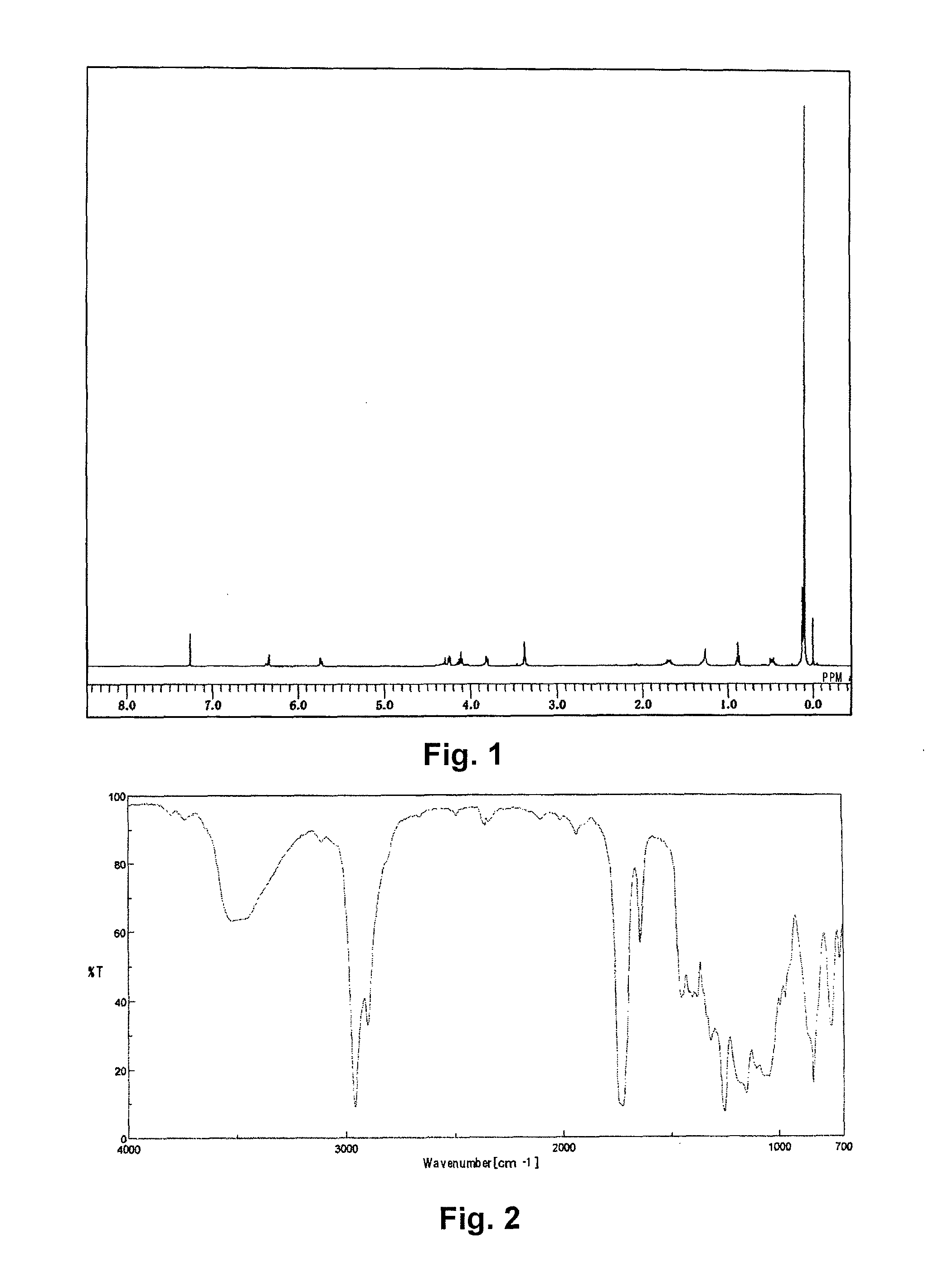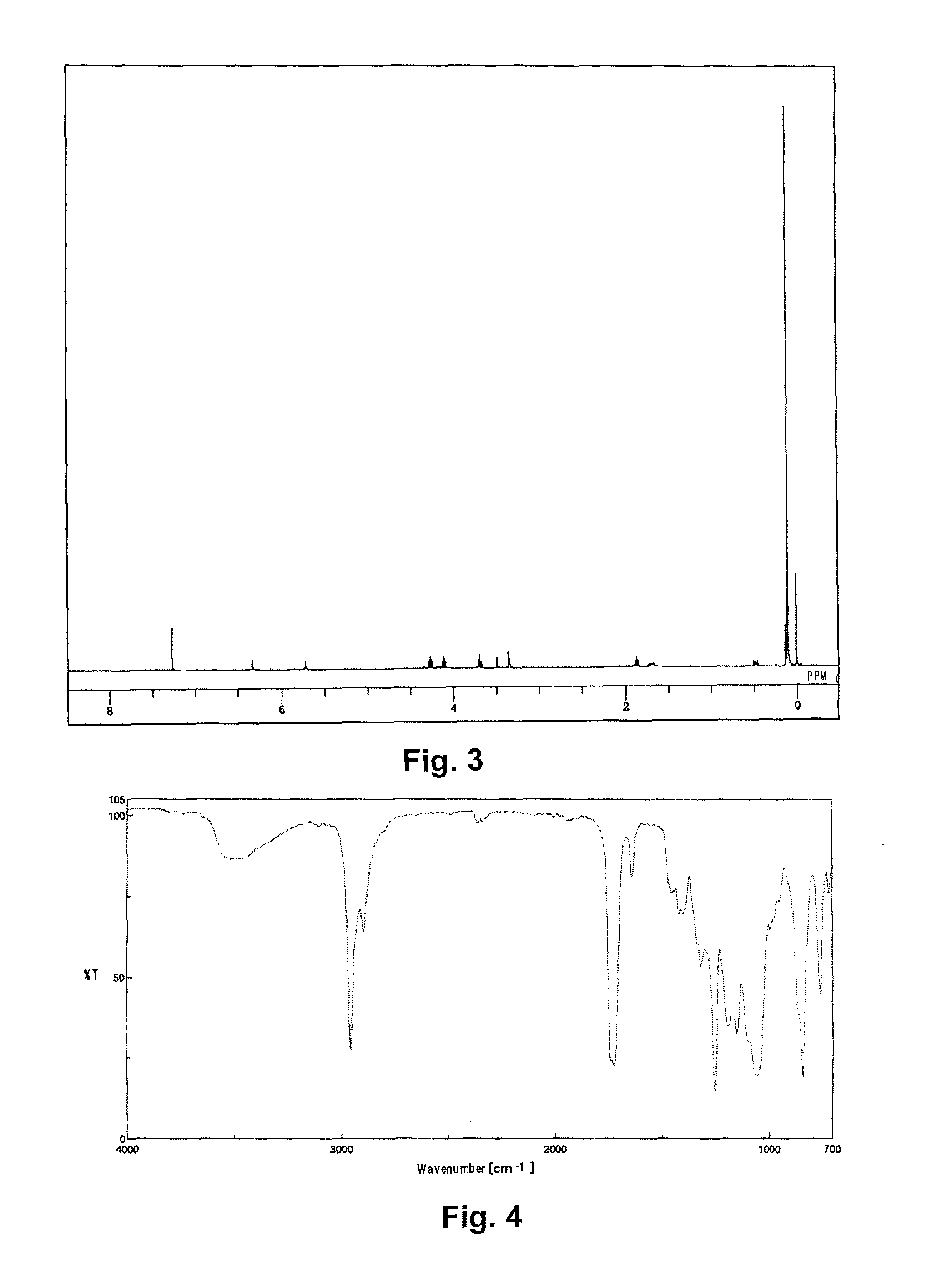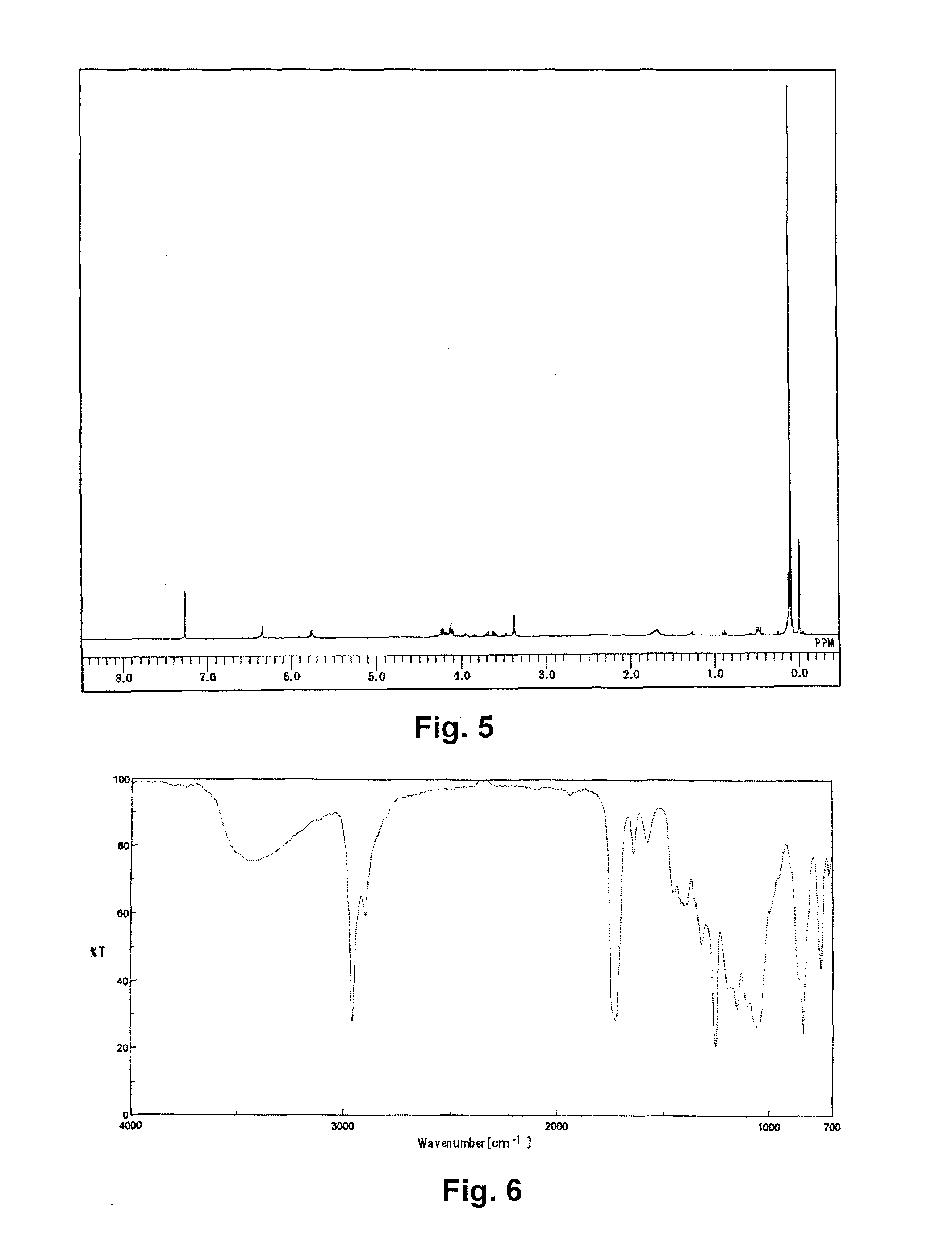Silicone monomer
a technology of silicone monomer and silicone, applied in the field of polymers, can solve the problems of inconvenient use as soft contact lens materials, and inability to provide transparent monomers, and achieve the effects of improving hydrophilicity, excellent compatibility, and high silicone conten
- Summary
- Abstract
- Description
- Claims
- Application Information
AI Technical Summary
Benefits of technology
Problems solved by technology
Method used
Image
Examples
example 1-1
Synthesis of [tris(trimethylsiloxy)silyl]propyl=3-(2-hydroxyethoxy)carbonyl-3-butenate) (abbreviated as EitaS)
[0076]A 1 L pear-shaped flask was charged with 30.00 g of itaconic acid anhydride (0.268 moles, manufactured by TOKYO CHEMICAL INDUSTRY CO., LTD.), 33.23 g of ethylene glycol (0.536 moles), and 0.095 g of 4-methoxyphenol, and stirred at 80 ° C. for 8 hours. The reactant solution was mixed with 400 g of N,N-dimethylformamide, to which 14.80 g of potassium carbonate (0.107 moles) was added, and the solution was stirred at 50 ° C. for 30 minutes to dissolve. To the resulting solution, 49.76 g of 3-iodopropyl tris(trimethylsiloxy)silane (0.107 moles) was added dropwise, and stirred for 6 hours.
[0077]After cooling, the reactant solution was transferred to a 3 L-separating funnel, diluted with 800 g of heptane, and washed with 800 g of ion exchanged water and then with a 2% aqueous solution of sodium sulfate. Then 800 g of methanol was added to the heptane phase to extract EitaS, ...
example 1-2
Synthesis of [tris(trimethylsiloxy)silyl] propyl=3-(2-hydroxypropoxy)carbonyl-3-butenate) (abbreviated as PitaS)
[0082]A 1 L pear-shaped flask was charged with 30.00 g of itaconic acid anhydride (0.268 moles, manufactured by TOKYO CHEMICAL INDUSTRY CO., LTD.), 40.74 g of 1,3-propanediol (0.536 moles), and 0.10 g of 4-methoxyphenol, and stirred at 80° C. for 8 hours. The reactant solution was mixed with 400 g of N,N-dimethylformamide, to which 14.80 g of potassium carbonate (0.107 moles) was added, and the solution was stirred at 50° C. for 30 minutes to dissolve. To the resulting solution, 49.76 g of 3-iodopropyl tris(trimethylsiloxy)silane (0.107 moles) was added dropwise, and stirred for 6hours.
[0083]After cooling, the reactant solution was transferred to a 3 L-separating funnel, diluted with 800 g of heptane, and washed with 800 g of ion exchanged water and then with a 2% aqueous solution of sodium sulfate. Then 800 g of methanol was added to the heptane phase to extract PitaS, an...
example 1-3
Synthesis of [tris(trimethylsiloxy)silyl] propyl=3-(2,3-dihydroxypropoxy)earbonyl-3-butenate) (abbreviated as GlitaS)
[0090]A 1 L pear-shaped flask was charged with 30.00 g of itaconic acid anhydride (0.268 moles, manufactured by TOKYO CHEMICAL INDUSTRY CO., LTD.), 49.31 g of glycerin (0.536 moles), and 0.11 g of 4-methoxyphenol, and stirred at 80° C. for 8 hours. The reactant solution was mixed with 400 g of N,N-dimethylformamide, to which 14.80 g of potassium carbonate (0.107 moles) was added, and the solution was stirred at 50° C. for 30 minutes to dissolve. To the resulting solution, 49.76 g of 3-iodopropyl tris(trimethylsiloxy)silane (0.107 moles) was added dropwise, and stirred for 6 hours.
[0091]After cooling, the reactant solution was transferred to a 3 L-separating funnel, diluted with 800 g of heptane, and washed with 800 g of ion exchanged water and then twice with a 2% aqueous solution of sodium sulfate. Then 800 g of methanol was added to the heptane phase to extract Glit...
PUM
| Property | Measurement | Unit |
|---|---|---|
| half-life temperature | aaaaa | aaaaa |
| temperature | aaaaa | aaaaa |
| temperature | aaaaa | aaaaa |
Abstract
Description
Claims
Application Information
 Login to View More
Login to View More - R&D
- Intellectual Property
- Life Sciences
- Materials
- Tech Scout
- Unparalleled Data Quality
- Higher Quality Content
- 60% Fewer Hallucinations
Browse by: Latest US Patents, China's latest patents, Technical Efficacy Thesaurus, Application Domain, Technology Topic, Popular Technical Reports.
© 2025 PatSnap. All rights reserved.Legal|Privacy policy|Modern Slavery Act Transparency Statement|Sitemap|About US| Contact US: help@patsnap.com



